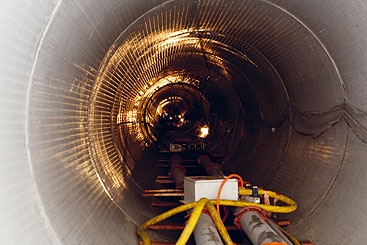The living Danube in Budapest

The living Danube in Budapest
The largest environmental investment to be implemented in Central Europe will fundamentally modernise the wastewater treatment system of Budapest, ensuring cleaner waters for all those living along the banks of the Danube.

The technology used for the Central Wastewater Treatment Plant on the northern part of Csepel Island will allow the complete vicinity of the plant to remain a green belt zone by occupying only the smallest area possible from the surface available.
From almost 800,000 households of Budapest, approximately 600,000 cubic metres of wastewater is discharged every day. Less than 50% of this amount is treated biologically with the present capacity of the city’s two other wastewater treatment plants; the rest is discharged into the river without biological treatment. This is not only a significant environmental load, but also has public health effects on the lives of citizens living in the Hungarian capital and along the banks of the Danube.
The Living Danube project – consisting of several subprojects – will ensure that 95% of the wastewater of Budapest is returned to the Danube following biological treatment by modernisation of the city’s wastewater treatment system. As the name of the project reflects, the objective is to turn or rather to return the river to a vital status, which has an impact on everyone in contact with the river.
A new wastewater treatment plant built on the northern part of Csepel Island will raise the proportion of biologically treated wastewater discharged to the river, and the plant will apply a closed-loop technology, complying with stringent noise and odour emission norms. The technology used will allow the complete vicinity of the plant to remain a green belt zone by occupying only the smallest area possible from the surface available.

Meeting international goals. In addition to the Central Wastewater Treatment Plant, the project also includes plans to construct the Buda Main Collector, the river crossings to Csepel under the Danube, to increase the capacity of three pumping stations (Ferencváros, Kelenföld and Albertfalva), a flood protection line as well as the building of the road connection to Csepel. The investment will also address the adequate management of sludge which is generated as a final product is €529.1 million, the eligible cost for Cohesion Fund is €428.7 million, and of this, 65% is financed by the European Union from the Cohesion Fund, 20% by the Hungarian state and 15% by the municipality.
By implementing the project Budapest meets the requirements of the Urban Waste Water Directive. “Hungary will also be contributing significantly to the objectives of the Danube Protection Convention – prevention of transboundary impacts, protection of the Danube, maintenance and improvement of the conditions of the river – on the cooperation aimed at the protection and sustainable use of the Danube,” says László Kóthay, State Secretary for Water of the Ministry of Environment and Water.
The Budapest Central Wastewater Treatment Plant project reached a significant milestone in the summer of 2009, as the test run of the wastewater treatment system started in August. “The EU always considered the great importance of this project – reasonably, because this is the most important and biggest environmental investment in Central Eastern Europe,” says Dr. László Becker, Senior Engineer for the project. “During my time working on this project, I have experienced first-hand the meaning of the saying that the Danube binds countries to each other.”





